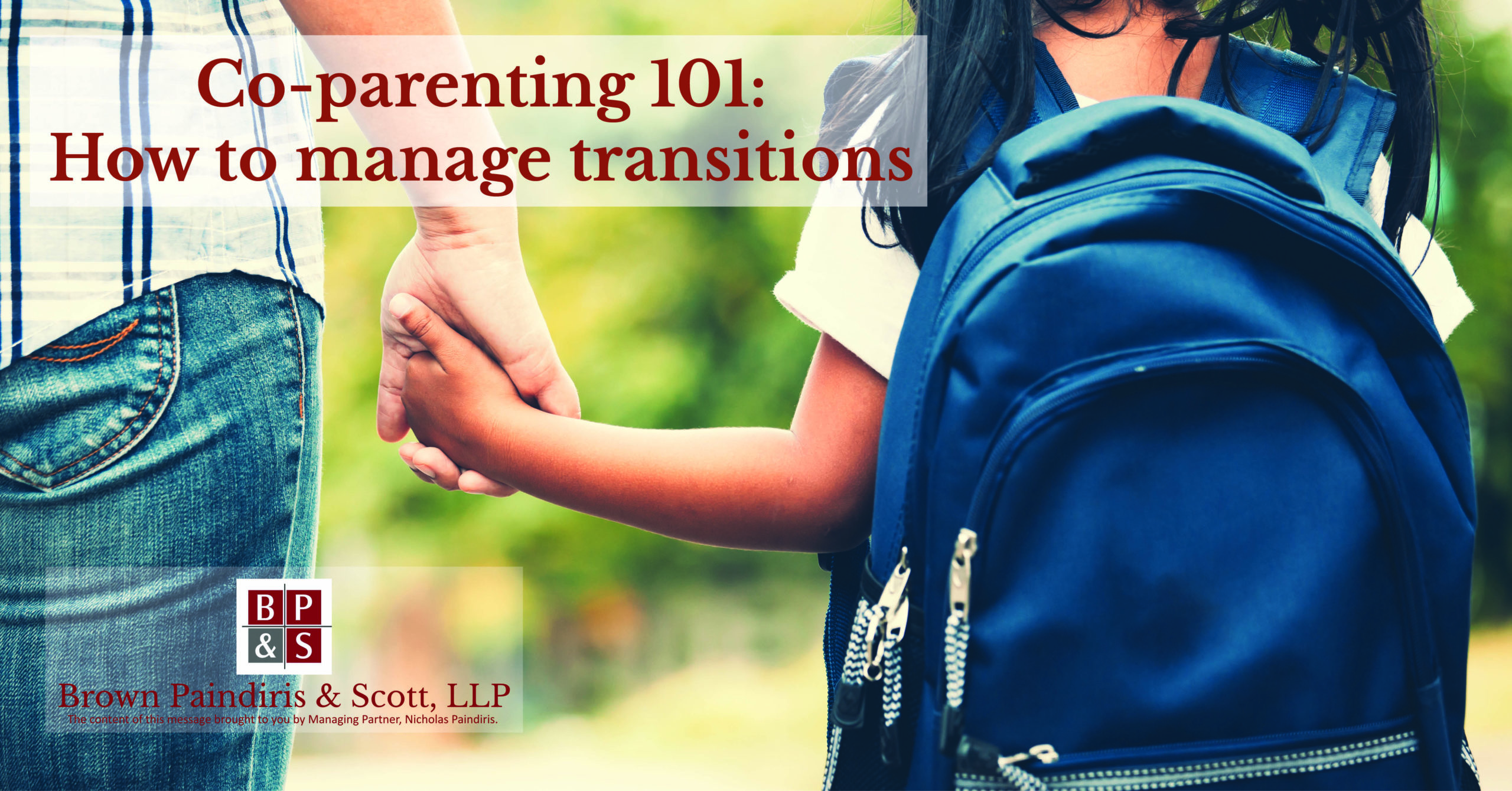Co-parenting 101: When Transitions are an Issue
Contributed by Kathryn Bissonnette
An inevitable outcome of divorce or parent separation is that your children now have two homes, and they need to transition from one home to the other on a regular basis. This can be a confusing and difficult time for a child – some more than others depending on their age, maturity level and emotional capacity. Parents have to understand that transitions are not always going to be smooth for children, and that’s ok! If your children are having difficulty at transitions, it doesn’t necessarily mean that they don’t want to go with the other parent, or that they are never going to adjust to a new parenting schedule. Here are some things that you can do as a parent to help ease this time for your children.

1. Make Transitions Simple and Quick: Your behavior at a transition can affect your child’s ability to manage transitions. Show your child affection and encourage them to have a good time with the other parent. By doing so, you are sending a message to your child that you respect the time the child spends with the other parent. This is an extremely valuable part of co-parenting and will show your child that spending time with both parents is important.
DO NOT prolong the transition by having a drawn-out exchange with the child about how much you will miss the child and how you will be sad when they are away. By doing so, you may be projecting your anxiety onto the child, which will then cause the child to have anxiety at transitions. This behavior may be construed by courts as you discouraging a relationship between the child and the other parent.
2. Utilize Drop Offs Whenever Possible: Transitions work better when one parent is dropping the child off to the other parent. This eliminates issues with the child not being prepared for an early pick up and then needing to rush around. It also eliminates a child waiting for the other parent in the event of a parent is late to pick up.
3. Transition to and from school whenever possible: If communication and cordiality between you and your co-parent is still a work in progress, think about modifying your parenting plan so that the majority of transitions take place to and from school. This means that one parent drops the child off at school at the end of their parenting time and the other parent picks the child up from school to start their parenting time. This makes for a much less chaotic scenario for your child if you believe there may be conflict at transitions.
DO NOT start conflict with the other parent in the presence of your child. It only takes one parent to end the conflict. If you do not engage in conflict, the conflict inevitably stops because the other parent has no ammunition to fight with.
4. Utilize Third Parties: If transitions at school are not possible and you are still experiencing major issues in your relationship with your co-parent, think about utilizing third parties to transition the kids. Chose third parties that will not get involved in conflict.
DO NOT utilize a significant other if you know that will upset or anger the other parent. Always keep your child’s feelings in the front of your mind. Make choices that your child will be comfortable with and that will make these transitions less anxiety inducing for your child.
5. Avoid the Police Station: Of course, due to safety issues, there are situations where it is necessary to transition children at the police station. In all other situations, try to avoid the police station. Children know that police are there to keep them safe. If a child knows that you are transitioning at the police station, they may equate transitions with being unsafe. You do not want them to make that connection. If you are concerned about your co-parent’s behavior at transitions, follow the other tips in this post or find a public place that has cameras.
For more information, contact Attorney Kathryn Bissonnette or visit the BPS page on Family Law.






